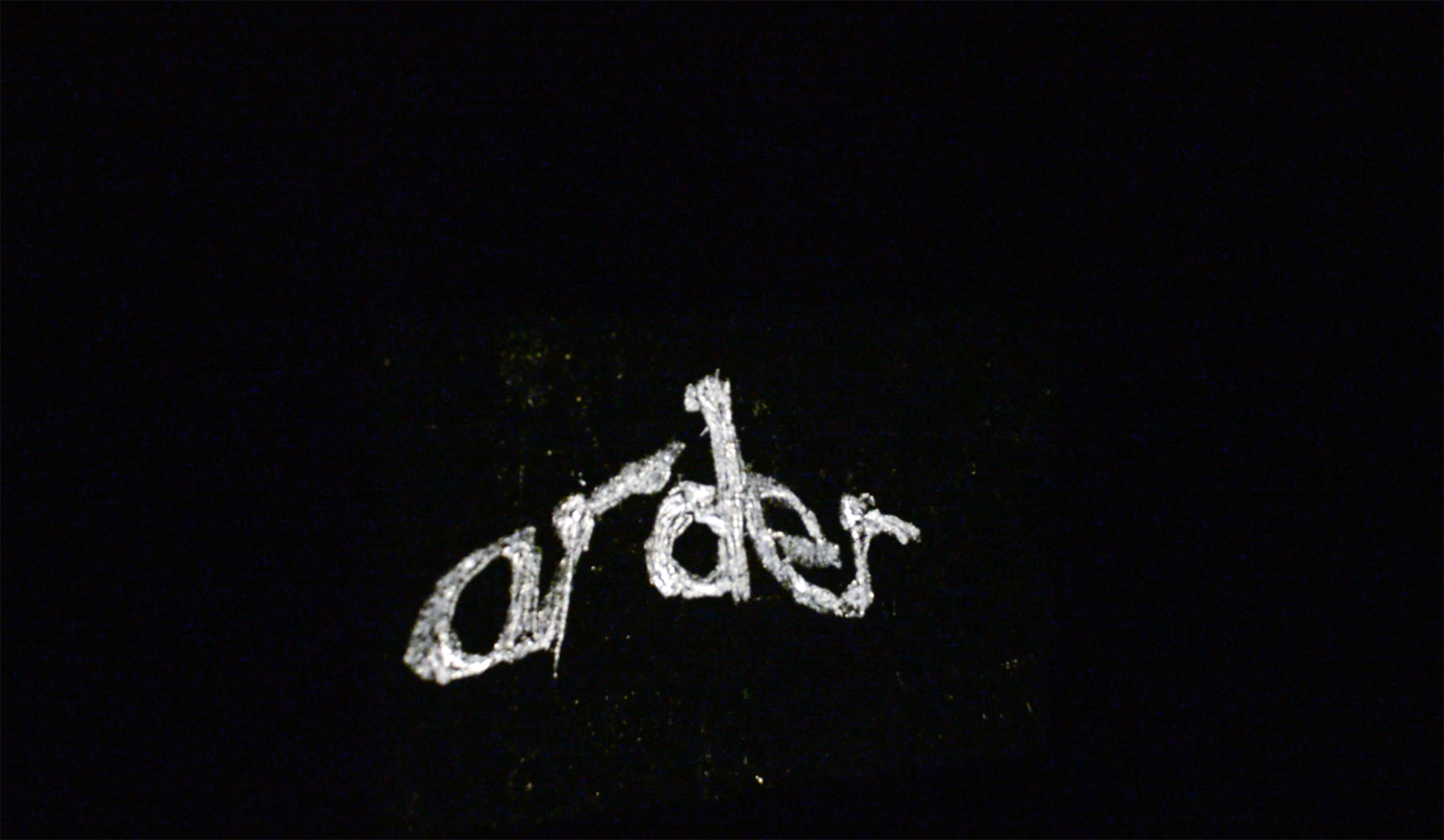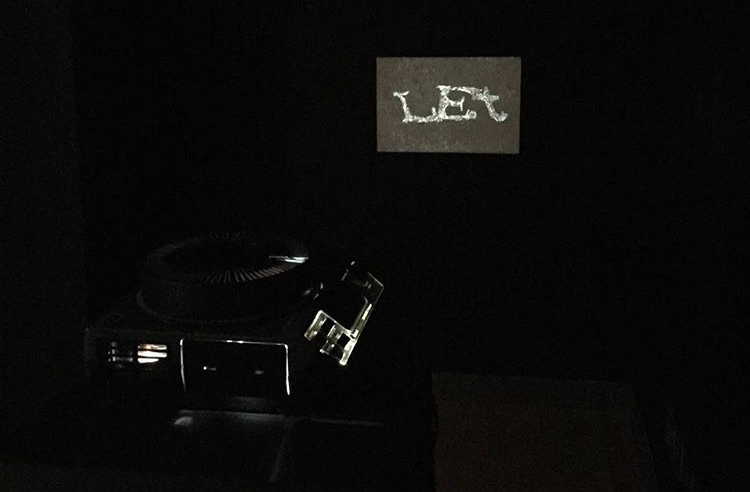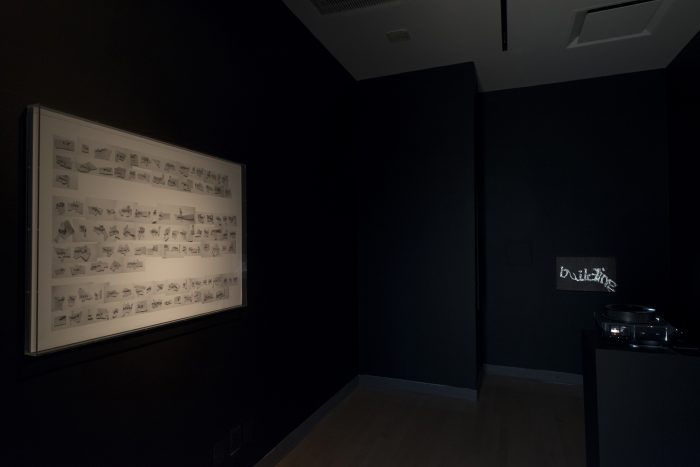
Pit of Babel
Installation, engraved carbon paper mounted on 35mm slides (80), slide projector (timer), archival inkjet print mounted in acrylic box, H.30″ L.40″ in. H.76 L.101 cm. 2016
The House of Dust by Alison Knowles is among the earliest computer-generated poem that was translated into a physical structure in Chelsea, New York. This architecture was later destroyed, restored and moved to Cal Arts Burbank, California, where Knowles was invited to teach in 1970-72. She enjoyed teaching her classes in the House and invited artists to interact with its open structure by creating new works.
In a series of 80 words-drawing engraved on carbon paper and mounted on blank 35mm slides, Benbenisty is quoting the most detailed description of the architectural elements of the tower of Babel. She applies a font created for the internet interface, the new Babylonian space.
Based on its existing technology, the reCAPTCHA, originally developed by Luis von Ahn and his team at Carnegie Mellon University, was created in an attempt to capitalize on this brief, conceptual labor. Like the CAPTCHA interface, reCAPTCHA asks users to enter words seen in distorted text images onscreen to determine whether or not the user is human. By presenting two words it both protects websites attempting to access restricted areas and helps digitize the text of the archives of The New York Times and books from Google Books. By correctly translating the images into typed words, the user gains access to the desired webpage.
Detouring towards the tower of Babel, the first myth relating architecture and language, Dust of Babel is highlighting the deconstruction of translation and underscoring the absence of physicality in a digital society.


Installation view in A House of Dust by Alison Knowles at The James Gallery, The Graduate Center, CUNY. Photo: Samuel Draxler